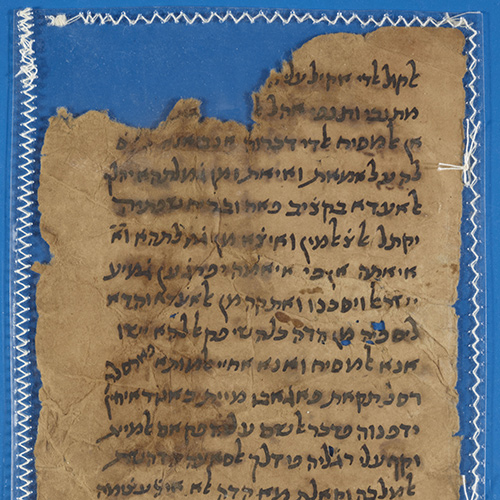
13th-century Judeo-Arabic manuscript of Toledot Yeshu (Life of Jesus)
Between the 6th and 11th centuries, Arabic was the native language of most of the Jewish population. Focusing on the writings of central thinkers and scholars during this critical era of Rabbinic Judaism, Miriam Goldstein, a scholar of interreligious relations in the medieval Arabic-speaking world, examines the significance of the sweeping linguistic and cultural transformations in Judeo-Arabic religious scholarship that shaped Judaism as we know it today.
Goldstein is a professor in the Department of Arabic Language and Literature at the Hebrew University of Jerusalem, and is currently a visiting professor at Harvard and at Yale.
October 18 Speaking, Reading, and Writing Arabic: A Revolution in Jewish History
Goldstein examines historical sources that reveal the rise of Islam and the spread of Arabic across the Jewish communities living in the Near East and North Africa and discusses what makes the Judeo-Arabic language unique.
October 25 The New Jewish Bookshelf: The Lasting Impact of the Adoption of Arabic
Writing in Judeo-Arabic, Jewish scholars took up new genres including philosophy, grammar, Biblical commentary, science, and more. Both the subjects and the style in which scholars wrote were new. Goldstein traces how the rise of the individual author-creator is a product of this period of Jewish history.
November 1 How Does it “Read” in Arabic? New Ways to Write about the Bible
Goldstein focuses on a field of study that was strikingly influenced by the turn to Arabic. Using the Bible as a test case, she explores how Jewish scholars writing in Judeo-Arabic adopted and created new approaches to the study of the holiest of Jewish books—and how these innovations shaped how we interpret the Bible today.
November 8 The Queen and the Handmaiden: Hebrew vs. Arabic in Jewish Literature
How and why did Hebrew replace Arabic as the major literary language for Jews? Drawing on primary sources by medieval Jewish writers who reflect on writing in Arabic versus Hebrew, Goldstein offers an understanding of how the gradual shift from Arabic to Hebrew occurred.
November 15 How Do We Know This? Manuscript Hunting in the 19th Century
Nineteenth-century European manuscript hunters scoured the Near East, intent upon acquiring manuscript troves, some odoriferous piles of scraps and yet others, revered synagogue libraries. Goldstein examines the circuitous routes that these manuscripts, which number in the tens of thousands, made to a vast variety of library collections around the world. She also takes an insider’s look at current research on this often enormous and uncharted wealth of materials and shares the fascinating stories of the men and women who discovered them.
5 sessions
General Information